22 things Singapore is famous for (and how to experience them)
There is a lot that Singapore is famous for, from landmarks to concerts and even the airport. I’ve put together this list as a comprehensive guide to anything that makes Singapore famous - hopefully this inspires you to come and check the city out (even if you’re only passing by in transit).
My name’s Chris, and from all my experience of visiting and staying in Singapore, this is what I feel Singapore is famous for:
1. Merlion
Our friend the Merlion is the iconic half-fish half-lion standing proudly over Marina Bay spitting out his water.
He was first constructed in 1972, though prior to being a statue he was the logo of the Singapore Tourism Board. The lion head represents Singapore’s original name (“lion city” - singapura), while the fish body represents Singapore’s origins as a fishing village.
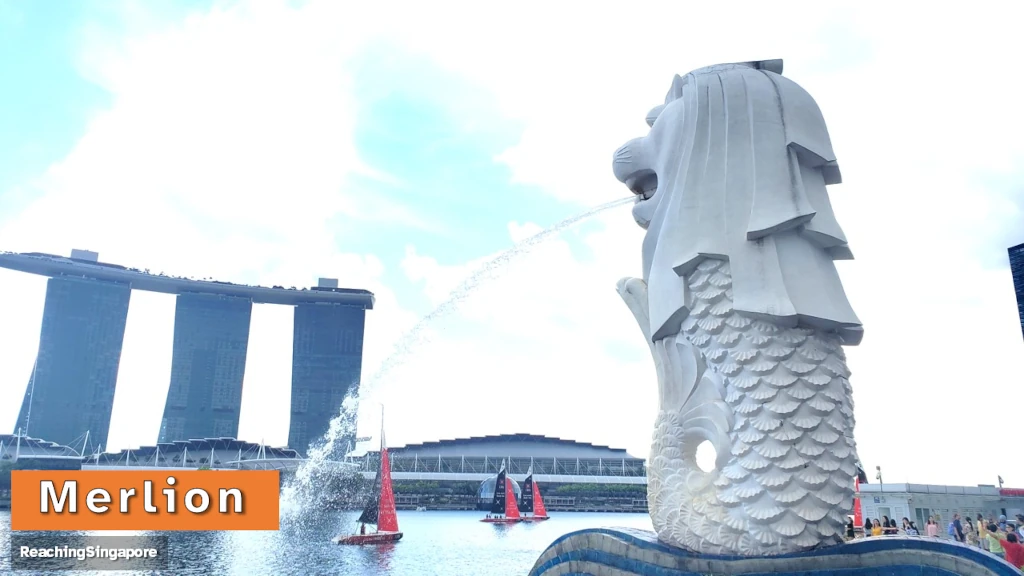
Tickets are not required to visit the Merlion - it is completely free to get up-close-and-personal with him to take a selfie.
The Merlion is located on the edge of Marina Bay and is easy to access from Raffles Place MRT station (green and red lines).
2. Marina Bay Sands
The three tower hotel, shopping, and casino development capped with an observation deck and infinity pool that first comes to mind when you think of the Singapore skyline. Marina Bay Sands is the iconic Singapore skyline.
Marina Bay Sands officially completed in 2011 opening up one of the largest public platform structures in the world. The viewing deck and bar offer unblocked views of Singapore and its surrounding waters. I recommend getting a reservation at Spago to enjoy a drink while you admire the view (do this instead of paying for observation deck entrance).
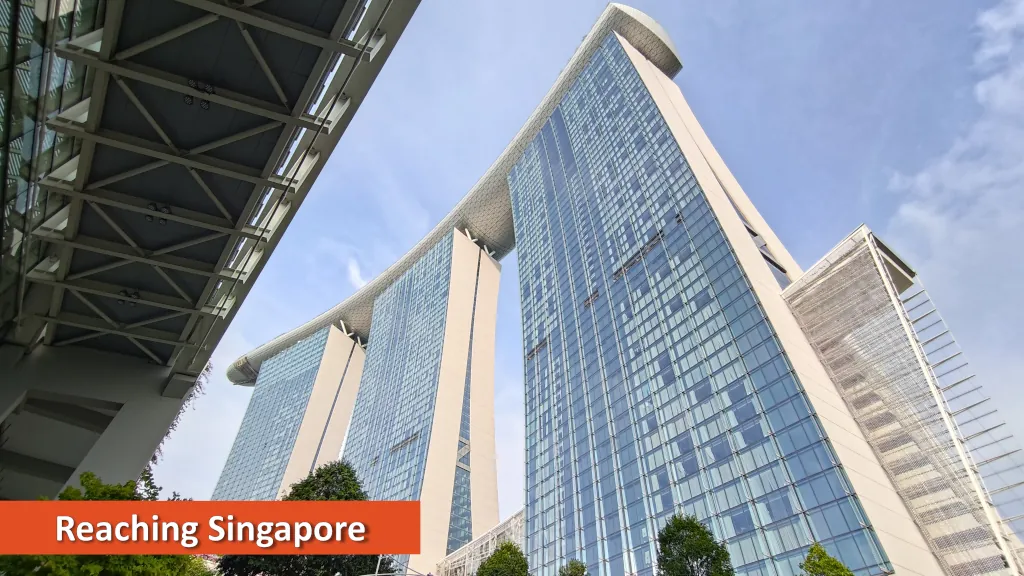
Did you know: A fourth tower is likely to be constructed in 2028 to add additional hotel rooms and a concert venue. While a fourth tower has been planned for a long time, its go-ahead is controversial now that MBS has become iconic for its current 3-tower image.
What to do at MBS:
- Eat and drink!
- Check out the view from the observation deck
- Roam around the casino floor (bring a passport if you plan to enter the gambling area)
- Photograph the iconic structure (I love a good selfie)
My favourite ways to take a photo of Marina Bay Sands are:
- Opposite side of Marina Bay, where the Merlion is (this is the standard shot that everyone must take),
- From Gardens by the Bay, particularly at night when MBS is starkly lit up,
- Looking up from the road between the “Shoppes” and MBS itself - a very interesting angle to shoot from.
To get to Marina Bay Sands, catch the train to Bayfront MRT station (yellow Circle Line). It’s also quite a pleasant walk from the Downtown MRT station (blue Downtown line - check out the Red Dot Museum along the way), or the Gardens by the Bay MRT station (brown Thomson-East Coast Line - walk through Gardens by the Bay to get there)
3. Changi, the world’s best airport
Singapore’s famous Changi airport is often ranked as the best airport in the world (by Skytrax).
Some highlights from Changi airport include:
- Giant indoor slide
- Open air swimming pool
- Butterfly garden
- Free movie theatre
- Copious local food (that’s also cheap!)
- Duty free shopping
My personal favourite feature of Changi is how smooth the immigration and security process is.
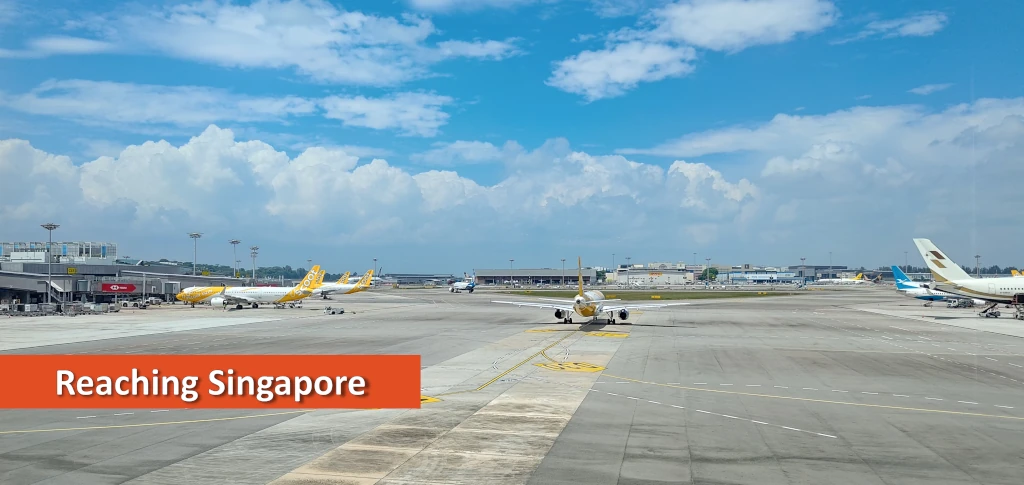
There are four terminals currently at Changi, with most of the highlighted attractions being in Terminal 3 or Terminal 1.
If you’re looking to catch the train that travels around the waterfall, it connects T3-B to T2-E.
4. Jewel waterfall
The 40m high indoor waterfall located right next to Changi airport - this is another world famous attraction located in Singapore.
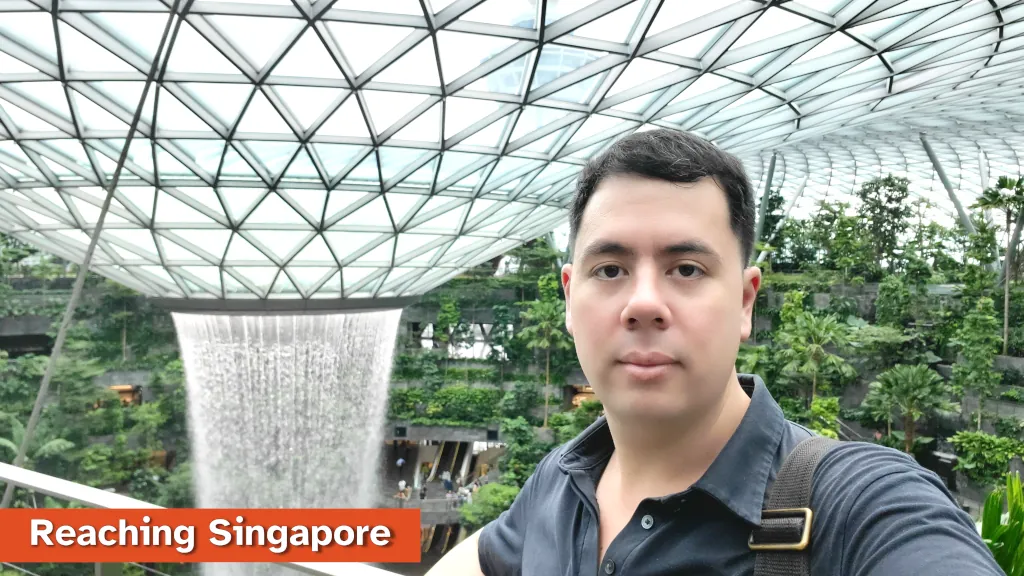
I feel what really makes this one famous is the contrast you get of this giant bright indoor waterfall against the expansive green walls surrounding it. My tip for visitors is to climb up the stairs hidden amongst the greenery for a better view away from most of the crowds.
It is free to access the waterfall and the rest of Jewel. You do not need to by flying to visit Jewel and the waterfall.
If you are flying though, Jewel offers early check in for some airlines, and a luggage storage facility.
While you’re at Jewel, I highly recommend getting something to eat. Putien is my favourite place to bring visitors for its very well-made Singaporean fare. If you’re in a rush, there’s a Toast Box (great for kopi and kaya toast) and a decent chicken rice located on the lower levels
5. Chicken rice
If I asked you to name one food dish that Singapore was famous for, most people would say chicken rice.
Chicken rice is tasty, cheap, affordable, and convenient - it’s easy to find good quality chicken rice island-wide. Every visitor to Singapore must try chicken rice.
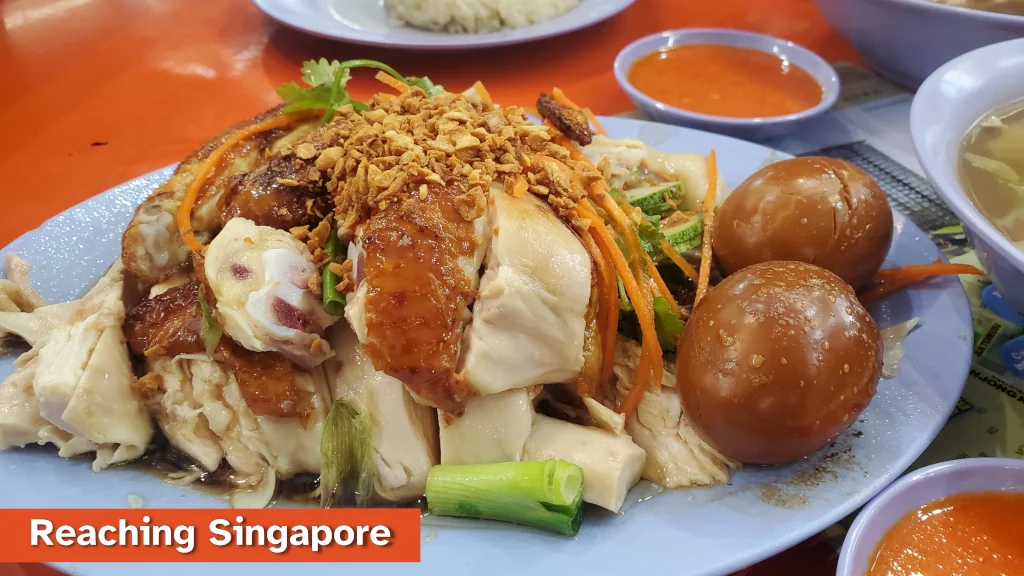
The most famous one in my opinion is Tian Tian chicken rice located at Maxwell hawker centre. I love the flavour, and even though it’s so popular, it’s still very affordable.
Last time I went I visited at 5pm on a weekday and the queue wasn’t very long. Be prepared to queue for over an hour during peak times though, and be careful at dinner as they can often sell out of chicken by 8pm.
Alternatives I like to bring people to are Lau Pa Sat and Jewel - both locations have tasty affordable chicken rice.
For a full list of the best food visitors to Singapore need to try, check out my full guide here: reachingsingapore.com/top-singapore-food
6. Crazy rich Asians
The 2018 film staring Constance Wu, Henry Golding, and Michelle Yeoh about a Chinese-American woman who discovers her boyfriend is from one of the richest families in Singapore.
This film threw Singapore into the minds of a younger American audience. It’s one of the most successful films I can think of that includes Singapore as a destination that people visit.
Some of the highlights from the film that you can try out today:
- Eat satay at a hawker centre - while Newton is the one featured in the film, I like to bring visitors to East Coast Lagoon for its open air satay by the sea
- Visit Chijmes - the iconic wedding venue from the movie is a stunning cathedral that you can explore for free (climb the spiral staircase to see where it goes)
- Gardens by the Bay - the location of the after party, take a stroll amongst the Supertrees for completely free!
7. Taylor Swift
Singapore secured a deal to be the exclusive regional host for Taylor Swift’s Era’s concert tour. Visitors flocked to Singapore from all across Asia, and some from even further afield, to attend the Taylor Swift concerts.
This propelled Singapore into the limelight for its ability to host large entertainment events safely, without risks of cancellation or disruption.
Singapore is setting itself up as a concert destination for Asia (they also hosted Coldplay recently); according to Singapore’s politicians it wants to become famous as a safe and reliable destination to host concerts.
8. Gardens by the Bay
Staggering Supertrees. When you think of Singapore, Gardens by the Bay with its Supertrees, is one of the first things that comes to mind.
The Supertrees are 25m-50m tall tree-like structures home to dozens of different plant species. The trees have tiny photovoltaic cells and rain water collection that they use to irrigate themselves.
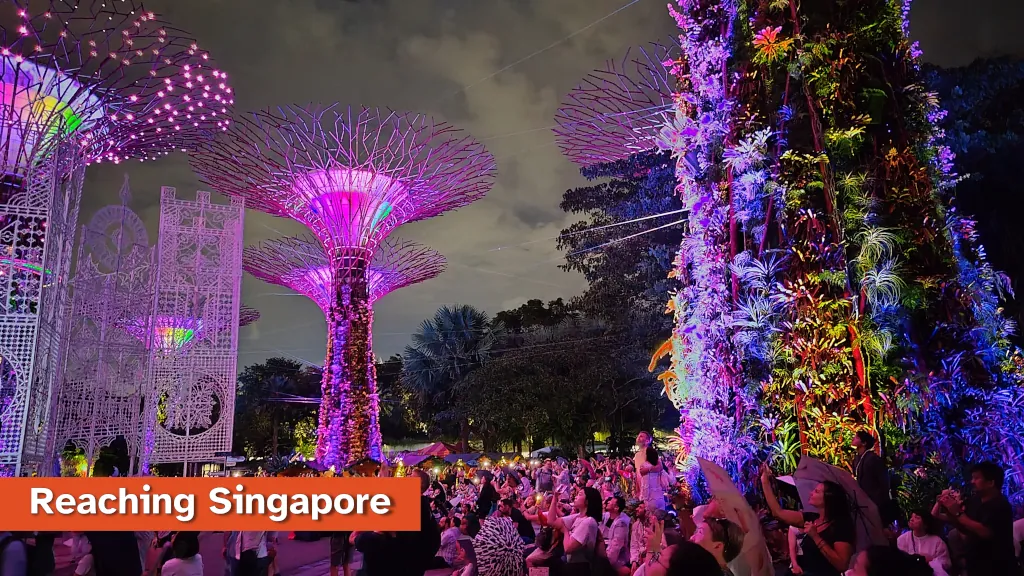
It’s free to visit Gardens by the Bay, and get up-close-and-personal with a Supertree. There are paid activities as well such as the skywalk, cloud forest, and flower dome.
Check out the light show if you’re there at night. The light show is put on daily at 7:45pm and 8:45pm. It’s also free! (except for Christmas and Chinese New Year when they put on a special event)
Gardens by the Bay is right next to Marina Bay Sands. It can be accessed from the Bayfront MRT station (blue Downtown line and yellow Circle line) or the Gardens by the Bay MRT station (brown Thomson-East Coast line).
9. Chilli crab
The other iconic dish that visitors think of when they think of Singapore - Chilli Crab.
Chilli crab is a deep-fried mud crab served in a sauce made of chilli, tomato, egg white, a some secret ingredients. It must be ordered with deep fried mantou buns that can be used to scoop up and eat the sauce.
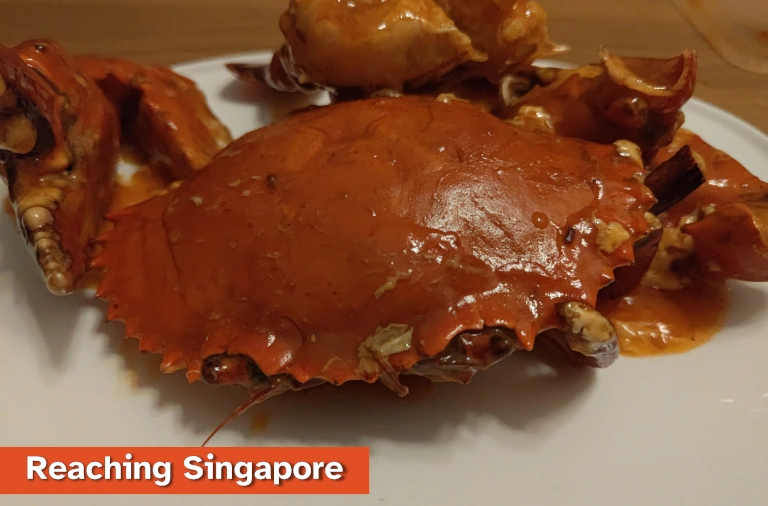
Expect to pay at least S$50 per person to eat chilli crab, though it is easy to spend over S$100 per person. the big driver of cost is the type of crab (mud crabs from Sri Lanka are cheaper than snow crabs from Alaska) and the type of restaurant (you pay more for air conditioning).
Singapore’s National Library has a whole article on the history of chilli crab, and its origins in Singapore. Check it out here.
10. Chewing gum ban
In 1991, two significant disruptions occurred to Singapore’s usually smooth running MRT network; passengers were stuck at platforms waiting for trains that were unable to move because the doors couldn’t close. The reason, in both incidents, was chewing gum.
Singapore banned chewing gum because:
- Gum became stuck in train doors in two separate incidents, causing thousands of MRT commuters to be delayed
- Careless disposal of chewing gum was creating cleaning problems in public areas, including housing estates
You can read the full story in the National Library archive here and the Straits Times archive here.
Over the years, Singapore has softened its stance slightly. Dental chewing gum is no longer outright banned, and people entering Singapore aren’t really searched for gum - there are more important things to worry about.
Chewing gum itself in public would likely only lead to a warning, even if you were caught littering it on the street. It’s the commercial import and sale that attracts the real fines and penalties (and as a visitor reading this guide to do your research, please don’t consider importing chewing gum for sale).
Breath mints are easily available at convenience store counters in place of chewing gum.
11. Botanic Gardens
With a UNESCO World Heritage listing, Singapore hosts a world-famous garden right in the middle of its city. The Singapore Botanic Gardens were first established in 1859 and have been a centre for plant research in the region ever since.
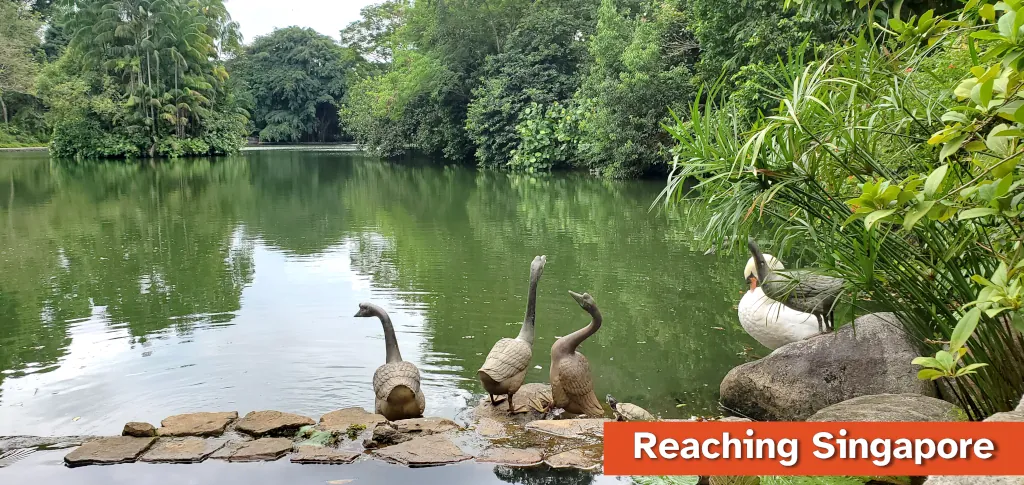
Free entry to most of the gardens is available, meaning that visitors can explore the beautiful lakes, open green spaces, and most of the speciality gardens for free. The healing garden is my personal favourite, it’s home to plants that have traditionally been grown for medicine.
There are a few paid areas, such as the National Orchid Garden which is a point of national pride in Singapore. It houses over 1000 species of orchid that you can view for an entrance fee of S$15.
Getting to the Botanic Gardens is easy as it has 2 MRT stations, one at each end. Botanic Gardens MRT sits on the yellow Circle Line, and Napier MRT sits on the brown Thomson-East Coast Line. I like to catch the MRT to one station and walk through the gardens to the other. The Orchid Garden is located in the middle.
I included the Botanic Gardens - and the Orchid Garden - in my recommended 24 hour guide to Singapore, check it out on YouTube for free here: https://www.youtube.com/watch?v=o1YnhpFdEWE
12. Satay street
Singapore is famous for its outdoor satay street, Lau Pa Sat.
Imagine sitting on the road - of a spotlessly clean city - next to the country’s stock exchange, eating skewers of meat that have been grilled over a smokey fire. That’s what Lau Pa Sat is, and that’s why Singapore is famous for its satay street.
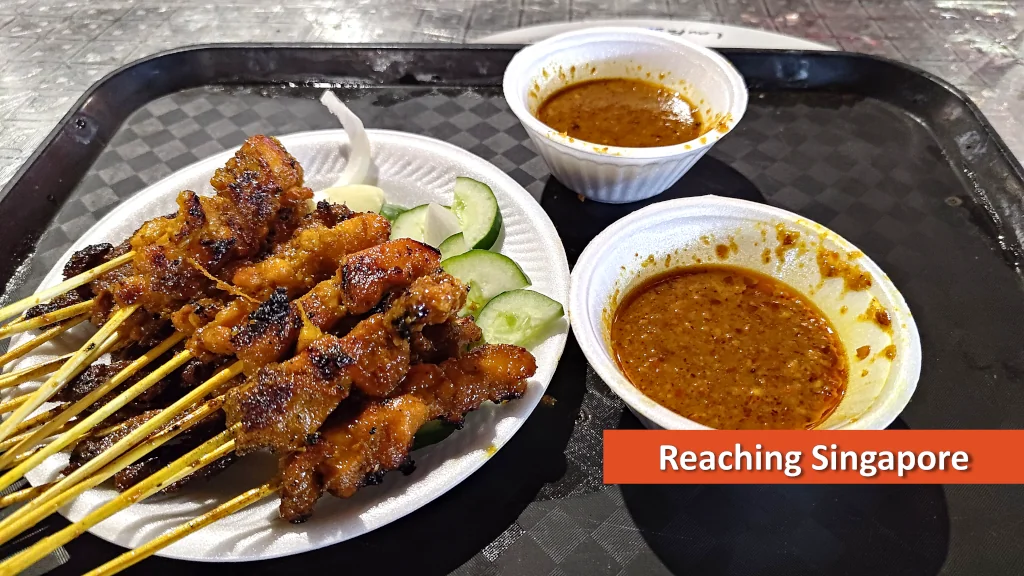
Satay is on my “must try” list of food for visitors to Singapore (check out the full list here), and Lau Pa Sat is the number 1 place I recommend visitors to Singapore buy it.
Make sure you head to Stall 7 & 8 and buy the satay from there. I’ve found them to be the best stall at Lau Pa Sat, and the wait is worth it.
Satay typically costs 70 cents to 90 cents per stick. I feel the seafood sold by the satay stalls at Lau Pa Sat to not be worth it; you don’t have to buy a set when you go, you can buy only satay instead.
13. Finance and banking
Speaking of the stock exchange, Singapore is famous as a wealth hub in Asia. It’s often been called the Switzerland of Asia due to its business and wealth-friendly banking regulations. And Singapore certainly makes a business out of being a finance hub.
Singapore offers a wealth of services (pun intended) to wealthy clients from around the world. Visitors with money like to spend time in Singapore to take care of their affairs, and enjoy themselves in the clean and safe city. I’ve also worked with some who come here for medical treatment at the same time.
Opening a company in Singapore is also relatively easy as a foreigner, there are plenty of companies that will help you arrange the right documents and set things up for you, for a fee of course. If you’re interested in this, the local companies authority has a complete how-to guide on their website, check it out here.
14. Formula One
Every year in September Singapore is propelled onto the world stage. The Marina Bay Street Circuit Formula One race was the first night race when it was first held in 1966. And every year since it’s been drawing crowds of tourists to watch the race, mingle with the crowds, and enjoy the concerts and spectacle of the night.
The Fairmont and Swissotel The Stamford are also famous for being amongst the best hotels to stay in to watch the race. A lot of their rooms have track views from balconies looking out over the city. They don’t come cheap though.
The Formula One is an occasion to splash a bit of cash on tickets, hotels, and enjoying the atmosphere of the race. While the cheapest ticket starts from roughly S$130, expect to spend well over S$400 if you want to enjoy all three days of racing. Hotels also charge a premium over race weekend.
15. Cleanliness
Singapore is a clean city. It’s famous for having no graffiti, no litter, and no broken roads.
While Singapore imposes heavy fines for littering, an “education first” approach is usually taken with visitors. If you accidentally drop litter, someone will help you get it to a bin rather than immediately get you fined. Penalties for graffiti and vandalism though can be very tough, do not do it.
Please keep Singapore clean when you visit: Don’t litter, don’t graffiti or vandalise anything, and please return your cutlery and tray at a hawker centre, coffee shop, or food court. If you smoke, please stick to the dedicated areas around bins where you can dispose of your butt into a bin.
16. Singapore sling
The famous cocktail which calls the Raffles hotel home. Created in 1915 by the hotel bartender, the Singapore Sling combines gin, brandy, pineapple juice and a few other flavours to offer a refreshing drink perfect for cooling off from Singapore’s heat. And with a name like “Singapore Sling”, how could it not be entirely suited to this city. The history of the drink is recorded in Singapore’s National Library “Infopedia”, check it out here.
The famous place to enjoy a Singapore Sling is at the Long Bar, where the drink will set you back S$39++ (in Singapore, tax and service charge are added separately). The Long Bar is located in the Raffles Hotel, and is open to anyone keen to try the drink.
My hack here is to ask for a Singapore sling when you’re flying Singapore airlines. Economy class includes alcohol on Singapore airlines, and that includes the Singapore sling. While it is pre-mixed (make of pre-mixed cocktails what you will), it does get you most of the flavour for costing you next-to-nothing extra.
17. Fines
The tourist merchandise will tell you that Singapore is a fine city, referring to the number of fines that are publicised in Singapore.
I’ve never had a problem with a fine; I’ve never wished I could do whatever the fine was prohibiting; I’ve never seen a tourist get fined (unless it was something that they knew they shouldn’t have been doing).
Singapore authorities, at least from what I’ve seen, prefer to educate first rather than fine. If you are doing something that might be wrong, such as not returning your cutlery at a hawker centre, you are more likely to receive an education than a fine - particularly if they see you are foreign.
And coming from Australia I’ve found that Singapore does not have an excessive number of fines compared to there.
18. Hot and humid
Singapore is famous for its year-round heat and humidity. While many will tell you Singapore doesn’t have seasons, I tend to disagree. It has two: Hot and dry, and hot and wet (I also consider durian a season, but that’s a story for another day).
A day in Singapore generally falls within one of three categories:
- Hot and sunny all day, and dry at night
- Hot and sunny in the morning, followed by rain in the afternoon and possibly at night
- Rain all day
The temperature is somewhere around 30 degrees during the day and 25 degrees at night, all year ‘round. The humidity is high though, so expect it to feel hotter than that if you’re comparing to a dryer country
Dress appropriately for the weather. Shorts, light shirts, open-toed shoes are all the typical go-to wardrobe items when visiting Singapore. Clothes that are light to wear and won’t make you all hot and stuffy as you move around the city.
Do dress up though. I included this recently on my complete list of Do’s and Don’ts for Singapore (check it our here). Style should not be forsaken for the heat, and there are plenty of combinations of clothing that look great and keep you cool. Personally I like throwing on a linen shirt so I can wear something with a collar while keeping it cool and airy in the heat.
19. Safe streets
I love exploring Singapore at night. The weather is cooler, the streets are less crowded, and there’s this air of calm that descends over the city.
Singapore’s safe streets allow me to explore Singapore at night. I’ve never worried about my safety wandering around the back streets and alleyways of Singapore, even in some of the less-desirable areas of the city.
And while the streets are safe, the police in Singapore do have a tagline low crime doesn’t mean no crime. This means that while crime against an individual is incredibly rare, it is still possible.
My advice to most visitors is to not be afraid to explore Singapore at night. Singapore is a 24-hour city and has a lot to offer at night, particularly for the hungry traveller.
20. Bird Paradise
This is my favourite wildlife attraction in Singapore. It’s also the world’s largest bird park, in terms of the number of birds cared for within its bounds.
There are over 400 species of bird to see, and the count of animals reaches over 3,000 at any one time. I like coming here to explore the open-air areas where birds are free to fly around and you can walk amongst them. The Bird Paradise features on my ideal 24 hour guide to Singapore, check it out for free on YouTube here: https://www.youtube.com/watch?v=o1YnhpFdEWE
The bird paradise costs S$48 for an adult and S$33 for a child. Discounts are available if you’re planning on visiting multiple wildlife attractions in Singapore. Bird Paradise is number 2 on my TOP nature attractions in Singapore, check out the full list here: reachingsingapore.com/nature-attractions-singapore.
21. Being a green city
Singapore is famous for its tree lined streets and integrating greenery into its buildings. Hotels, condominiums, streets, parks, and public spaces are all designed to have elements of nature creep into them.
The most famous example I can think of is the Park Royal Pickering which has greenery overflowing from every wall. My favourite though is the Oasia hotel building, it’s a green contrast compared to the grey office buildings surrounding it.
If you’re arriving in Singapore during the day you’ll likely also get a fantastic view of the flowers that line the main expressway into the city from the airport. These flowers are carefully looked after to give visitors to Singapore the best first impressions of the city.
If you’re interested in the TOP nature attractions in Singapore, check out the complete guide I wrote here!
22. Night Safari
Singapore’s Night Safari was the first nocturnal wildlife park in the world! Currently, it’s home to over 900 animals, many of which are from endangered species. The park is well-known for its extensive conservation work and is deeply involved with a number of global breeding programmes.
The Night Safari can only be explored at night - there are walking trails or a tram to take. I usually advise walking where possible, the bright lights of the tram I feel serve as more of a distraction than to help you observe the animals in their habitats.
Visiting the Night Safari costs S$55 for adults and S$38 for children. It’s open from 7:15pm until midnight. I recommend NOT relying on a taxi to get home after visiting the Night Safari, it takes a long time and it’s expensive - use the shuttle bus and the MRT instead.
Further Reading
Still interested in finding out more about what makes Singapore great, and what you can do during your visit? Check out more of my guides here:

